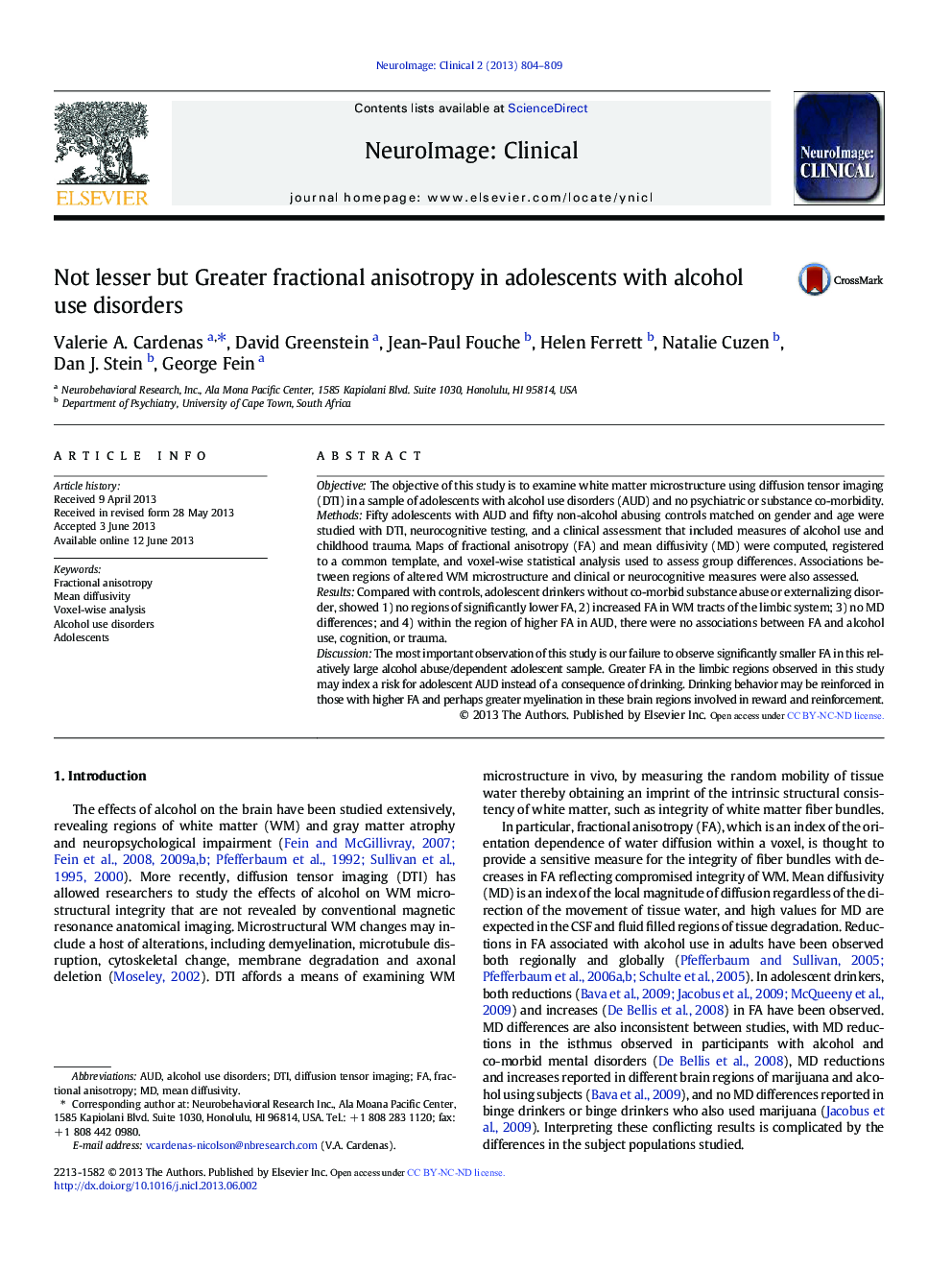| Article ID | Journal | Published Year | Pages | File Type |
|---|---|---|---|---|
| 3075564 | NeuroImage: Clinical | 2013 | 6 Pages |
•Adolescents with alcohol use disorders were studied using diffusion tensor imaging.•No regions of lower fractional anisotropy in adolescent drinkers vs. controls.•Limbic system fractional anisotropy was increased in adolescent drinkers.•No differences in mean diffusivity were observed.•There were no associations between fractional anisotropy and clinical measures.
ObjectiveThe objective of this study is to examine white matter microstructure using diffusion tensor imaging (DTI) in a sample of adolescents with alcohol use disorders (AUD) and no psychiatric or substance co-morbidity.MethodsFifty adolescents with AUD and fifty non-alcohol abusing controls matched on gender and age were studied with DTI, neurocognitive testing, and a clinical assessment that included measures of alcohol use and childhood trauma. Maps of fractional anisotropy (FA) and mean diffusivity (MD) were computed, registered to a common template, and voxel-wise statistical analysis used to assess group differences. Associations between regions of altered WM microstructure and clinical or neurocognitive measures were also assessed.ResultsCompared with controls, adolescent drinkers without co-morbid substance abuse or externalizing disorder, showed 1) no regions of significantly lower FA, 2) increased FA in WM tracts of the limbic system; 3) no MD differences; and 4) within the region of higher FA in AUD, there were no associations between FA and alcohol use, cognition, or trauma.DiscussionThe most important observation of this study is our failure to observe significantly smaller FA in this relatively large alcohol abuse/dependent adolescent sample. Greater FA in the limbic regions observed in this study may index a risk for adolescent AUD instead of a consequence of drinking. Drinking behavior may be reinforced in those with higher FA and perhaps greater myelination in these brain regions involved in reward and reinforcement.
